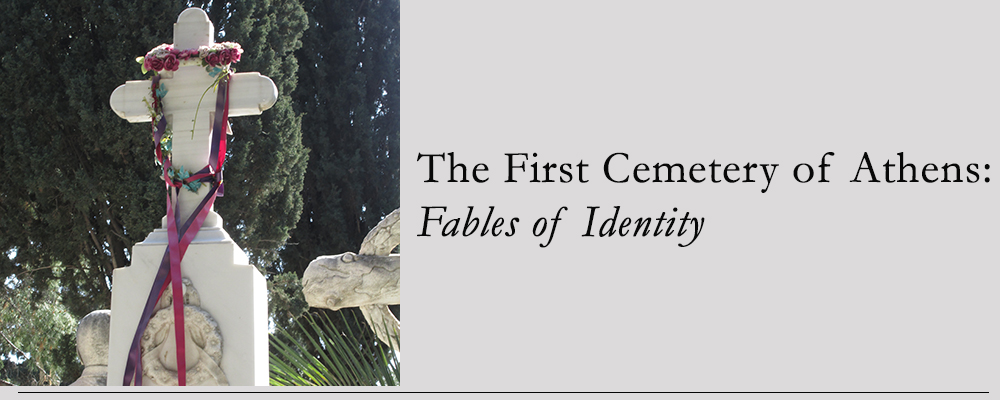Ioannis
Varvakis ΙΩΑΝΝΗΣ ΒΑΡΒΑΚΗΣ
Born
1745 Died 1825
Grave: Plaza, Number 2
Ioannis
Varvakis is proof that events can destroy you and then raise you to the heights
- providing you are astute, lucky, and
know the right people. He
was one of the earliest merchant benefactors of the emerging Greek nation.
Although he became wealthy and titled in Russia, he never forgot his homeland. He joined the Filiki Etairia sometime after 1815 and aided the revolution financially
wherever he could. When he died, he left a fortune to a state he did not live
to see established.
His Life
Ioannis was born in Psara near Chios. As a young man he
became captain of his own ship and, like most sea captains of the time, did a
little privateering along with legitimate trading. Varvakis (hawk) had been his childhood nickname
because of his piercing eyes, and he
would later choose it as his surname. He might have remained a sea captain were
it not for the Russian -Turkish war of 1768.
The Russian-Turkish War and its Aftermath
The war of these two Titans would reverberate for
years in Greek history. At first, Russia was only too willing to promote Greek
resistance against the Ottomans in the Aegean and elsewhere. Varvakis threw in
his lot with the Russians using his own funds to equip his ship with cannons. But
because it was not a true war ship, its ultimate fate was to be used as a fire ship, - effective but, alas, combustible
by definition, and good for one time use only. (1)
Worse was to come. When Russia made peace with the
Turks in 1774, it gained the north coast of the Black sea but the peace
agreement left Greek freedom fighters in Ottoman territories vulnerable to
vicious reprisals. Varvakis found himself destitute and on the run, but not
without friends in high places. The story goes that the Russian ambassador to
Constantinople helped him to escape into Russia and gave him appropriate
letters of introduction to the Russian court. He arrived in Saint Petersburg at
the beginning of 1776 where he met Potemkin,
the famous military leader and current lover of Catherine the Great. Potemkin arranged
an audience.
Catherine was not only prepared to recognize Varvaki’s
efforts during the war, she also gave him 1000 golden roubles in compensation
for his losses, permission to settle in Russia, and duty free fishing rights in the Caspian Sea for a ten year period.
There was
method in this generosity. Catherine and Potemkin were keen to
take advantage of the many Greek refugees fleeing reprisals to populate and
economically jumpstart their newly acquired territory. They were eager to
establish trade in Asia, namely with Persia. The Greeks were Orthodox, had
shipping and trading experience, and already had a vast network of family and
business connections at their disposal – perfect citizens for her new economic
zone. There was also a quid pro quo. Apparently Varvakis often acted as a
diplomatic and financial agent for Russia when required and put his substantial
expertise in shipping and navigation at Russia’s disposal on many occasions.
the famous piercing stare
Varvakis moved to Astrakan,
a city on the Volga River where it enters the Caspian Sea and quickly
understood that caviar was his route to
success. By developing a method by which fresh caviar could be preserved
and therefore transported, he became extremely wealthy. By 1778 he employed
more than 3,000 workers and business was booming. In 1789, he was made a permanent citizen of Russia. He took a Russian name, financed
various Russian endeavors, and was even made a ‘hereditary’ nobleman by the
then Tsar.
The Varvakis Coat of Arms
In 1812 he moved to Taganrog, a city in the Sea of
Azov that was inhabited by many Greeks. There he built a grand Orthodox
monastery as well as an imposing mansion for himself:
The house in Taganrog that caviar built
He could have stayed there and basked in his good
fortune, but he did not. Varvakis
was a Greek patriot.
He joined the Filiki Etairia sometime after 1815 and
assisted the fighters economically when the revolution broke out. When Psara it
was devastated by an Ottoman naval attack in 1824 and its population either
killed or scattered, he traveled to Greece in person to aid the refugees but died in 1825 in Zakynthos at the age of 80,
well before the success of the revolution was assured.
He left a
million roubles in his will (and safe in Russian banks) for the founding of Greece’s
first high school; it would be named the Varvakeio school when it finally opened in 1860, and it is still thriving in Athens today. Some
say he also financed the Athens’ covered market, the Varvakeio, completed in
the late 1800s; others that it was simply named after him in honour of his
service to the nation.
Varvakis was
buried in Zakynthos but his body was brought to Athens to the austere grave
directly beside the Ossuary in the Plaza of Athens’ First Cemetery - to remind
Greeks of their generous benefactor.
The epitaph reads: He devoted his life and fortune
for the freedom and the spiritual rebirth of Greece. At this point, you
might expect a carved phoenix, but instead, something resembling a small lit Aladdin’s
lamp is carved beneath the inscription. This lamp is an ubiquitous symbol in The
First Cemetery and, incidentally, also a Masonic symbol of initiation.
The Grave is
in the Plaza, Number 2
Footnote
(1) Fire
Ships would be used to good account by the Greeks during the War of
Independence. It was one way to even up the odds of a smaller boat against a
war ship.
For
an excellent article on Ioannis
Varvakis.
God
Loves Caviar is an award winning film about his life.






Δεν υπάρχουν σχόλια:
Δημοσίευση σχολίου